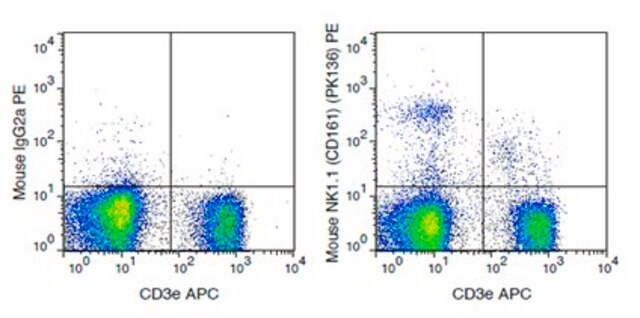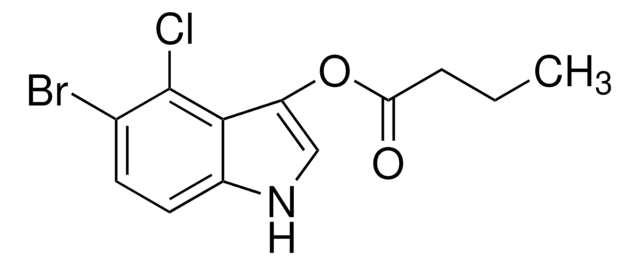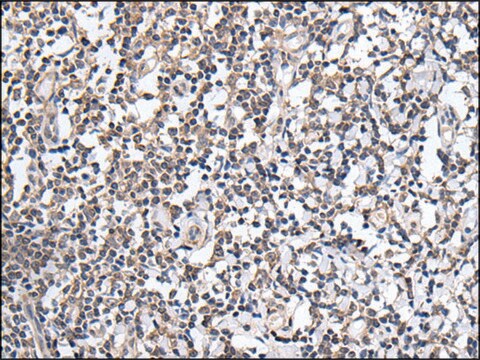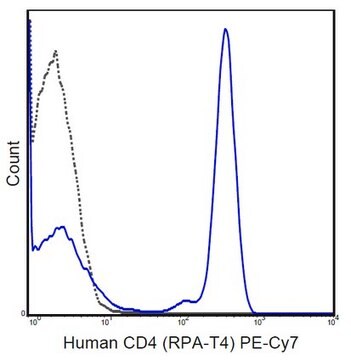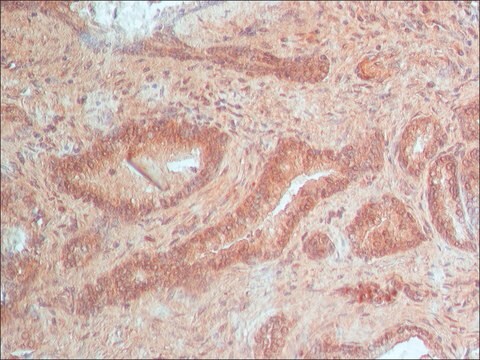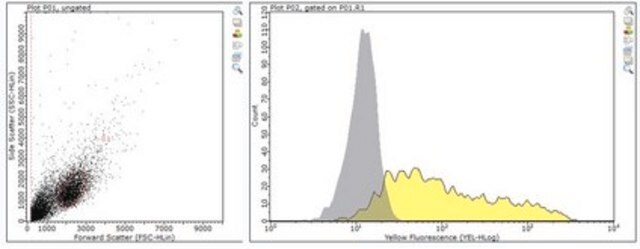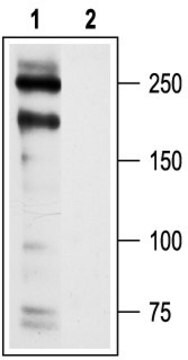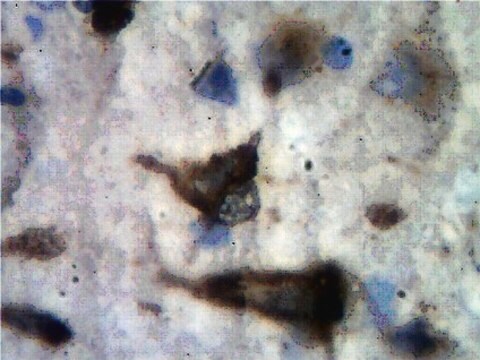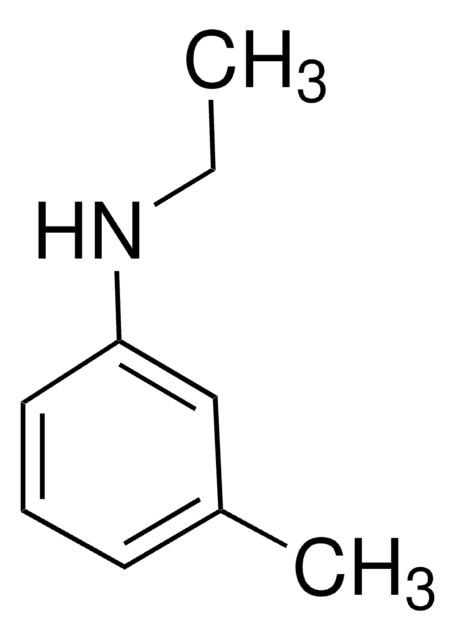MABF1495Z
Anti-NK1.1 (mouse) Antibody, clone PK136, Azide Free
clone PK136, from mouse
Sinonimo/i:
Killer cell lectin-like receptor subfamily B member 1B allele A, Killer cell lectin-like receptor subfamily B member 1C, CD161b, CD161c, CD161 antigen-like family member B, CD161 antigen-like family member C, Ly-55b, Ly-55c, Lymphocyte antigen 55b, Lymph
About This Item
Prodotti consigliati
Origine biologica
mouse
Livello qualitativo
Forma dell’anticorpo
purified immunoglobulin
Tipo di anticorpo
primary antibodies
Clone
PK136, monoclonal
Reattività contro le specie
mouse
tecniche
activity assay: suitable
flow cytometry: suitable
immunoprecipitation (IP): suitable
Isotipo
IgG2aκ
N° accesso Genebanck
N° accesso NCBI
modifica post-traduzionali bersaglio
unmodified
Informazioni sul gene
mouse ... Klrb1C(17059)
Categorie correlate
Descrizione generale
Specificità
Immunogeno
Applicazioni
Activity Assay: A representative lot activated target cell killing by cross-linking NK cell surface NK1.1 (NKR-P1C) and target cell surface Fc receptor. Ab-induced redirected lysis (AIRL) assay employing NK cells expressing both NKR-P1B and NKR-P1C prevented NK cell cytotoxicity activation by clone PK136 (Carlyle, J.R., et al. (1999). J. Immunol. 162(10):5917-5923).
Immunoprecipitation Analysis: A representative lot co-immunoprecipitated SHP-1, but not SHP-2 or SHIP, from Swiss NIH mouse-derived MNK-1 pre-NK cells upon upregulating NKR-P1B intracellular ITIM motif tyrosine phosphorylation by pervanadate treatment (Carlyle, J.R., et al. (1999). J. Immunol. 162(10):5917-5923).
Flow Cytometry Analysis: A representative lot immunostained the surface of Jurkat transfectants expressing C57BL/6J (B6) mouse-derived NKR-P1B/CD161b or Swiss NIH (Sw) mouse-derived NKR-P1C/CD161c/NK1.1, but not Jurkat transfectants expressing B6-derived NKR-P1A/CD161a (Carlyle, J.R., et al. (1999). J. Immunol. 162(10):5917-5923).
Flow Cytometry Analysis: A representative lot immunostained NKR-P1B/CD161b-expressing NK cells from Swiss NIH (Sw) mouse strain, NKR-P1C/CD161c/NK1.1-expressing NK cells from C57BL/6J (B6), as well as (B6 3 Sw)F1 cross-strain-derived NK cells expressing both NKR-P1B and NKR-P1C (Carlyle, J.R., et al. (1999). J. Immunol. 162(10):5917-5923).
Note: Clone PK136 is also available in the following conjugated forms for flow cytometry application, APC (MABF1487 & MABF1488), FITC (MABF1489 & MABF1490), PE (MABF1491), PerCP-Cy5.5 (MABF1493 & MABF1494). redFluor® 710 (MABF1496 & MABF1497).
Inflammation & Immunology
Immunological Signaling
Qualità
Flow Cytometry Analysis: 1.0 µg of this antibody detected NK1.1-positive mouse splenocytes.
Descrizione del bersaglio
Stato fisico
Stoccaggio e stabilità
Handling Recommendations: Upon receipt and prior to removing the cap, centrifuge the vial and gently mix the solution. Aliquot into microcentrifuge tubes and store at -20°C. Avoid repeated freeze/thaw cycles, which may damage IgG and affect product performance.
Altre note
Note legali
Esclusione di responsabilità
Non trovi il prodotto giusto?
Prova il nostro Motore di ricerca dei prodotti.
Codice della classe di stoccaggio
12 - Non Combustible Liquids
Classe di pericolosità dell'acqua (WGK)
WGK 2
Punto d’infiammabilità (°F)
Not applicable
Punto d’infiammabilità (°C)
Not applicable
Certificati d'analisi (COA)
Cerca il Certificati d'analisi (COA) digitando il numero di lotto/batch corrispondente. I numeri di lotto o di batch sono stampati sull'etichetta dei prodotti dopo la parola ‘Lotto’ o ‘Batch’.
Possiedi già questo prodotto?
I documenti relativi ai prodotti acquistati recentemente sono disponibili nell’Archivio dei documenti.
Il team dei nostri ricercatori vanta grande esperienza in tutte le aree della ricerca quali Life Science, scienza dei materiali, sintesi chimica, cromatografia, discipline analitiche, ecc..
Contatta l'Assistenza Tecnica.